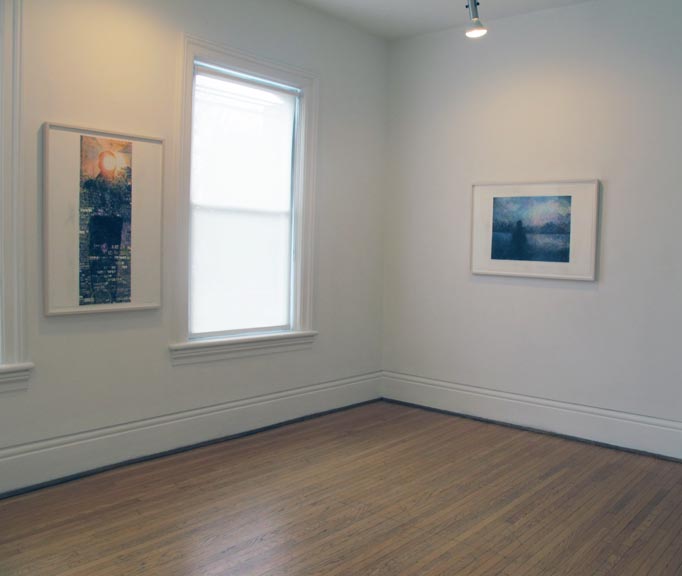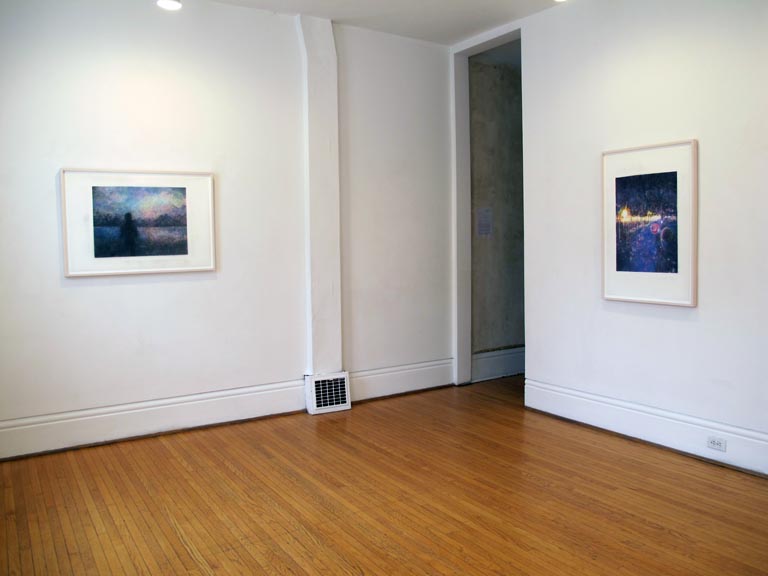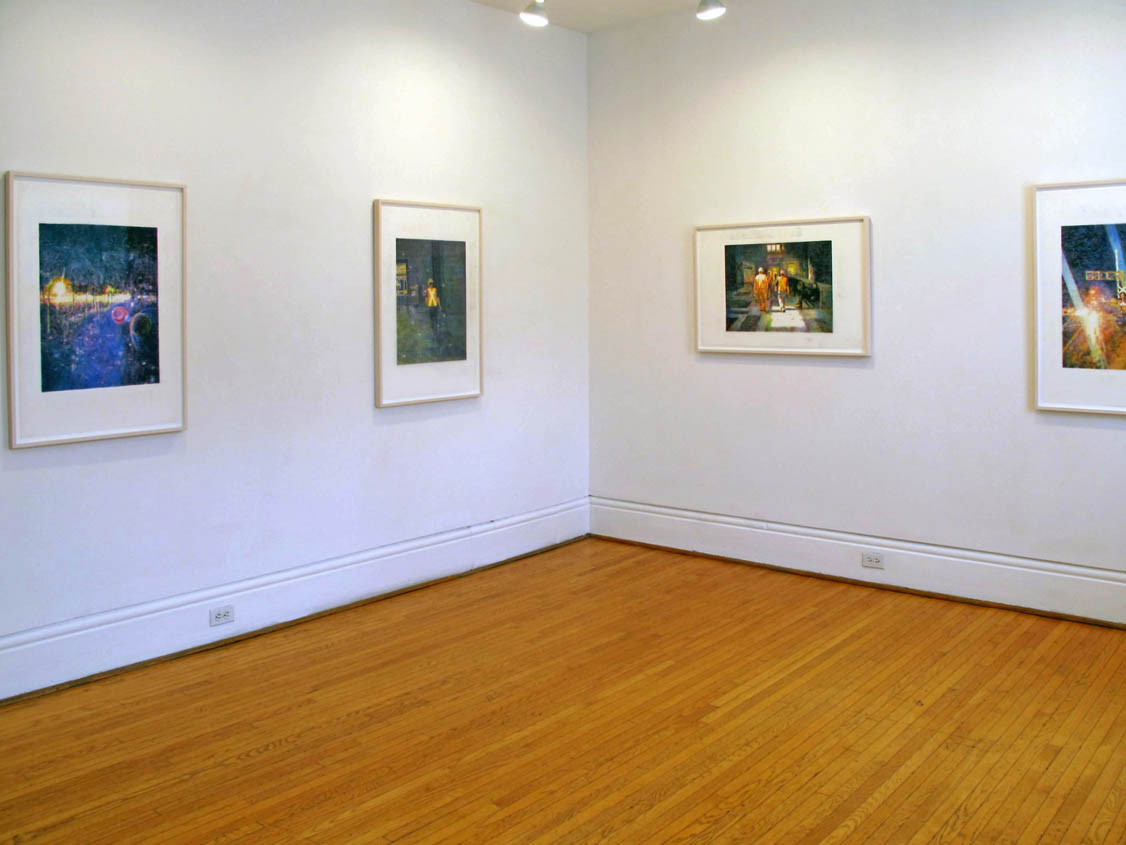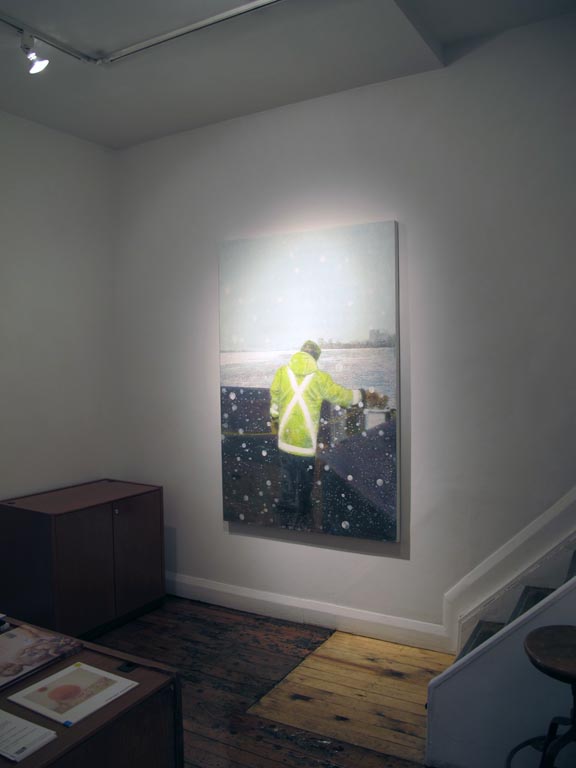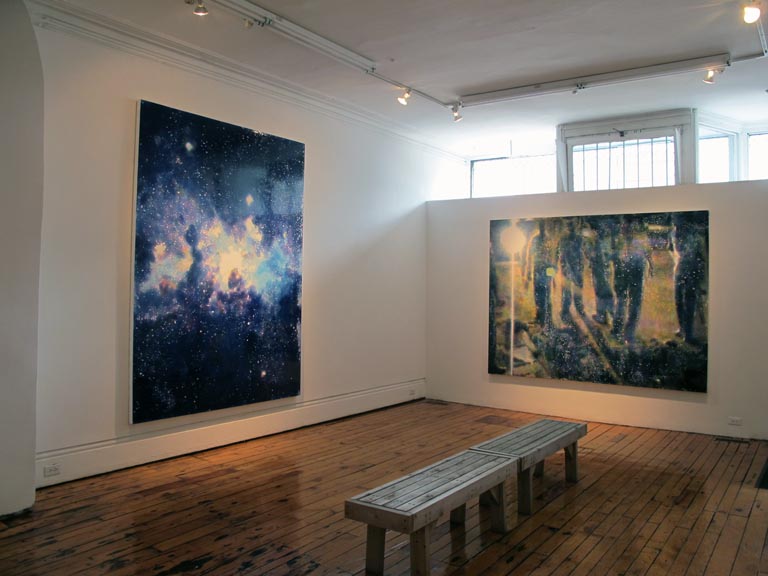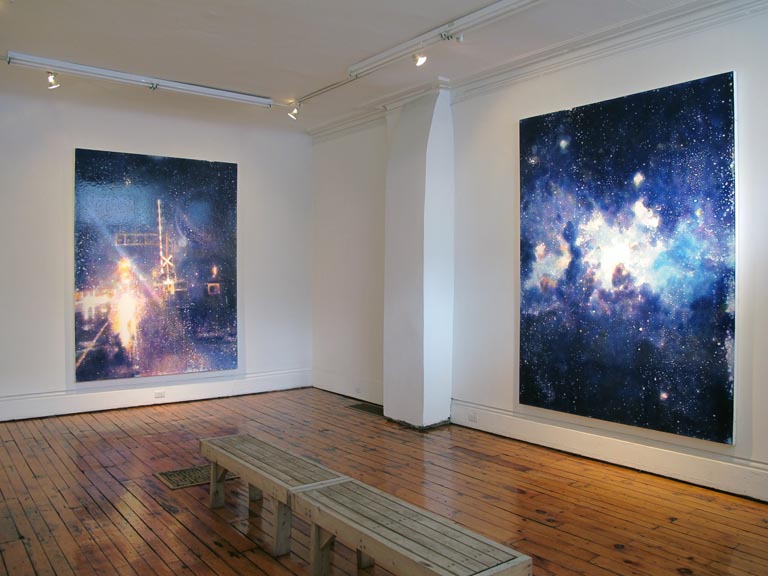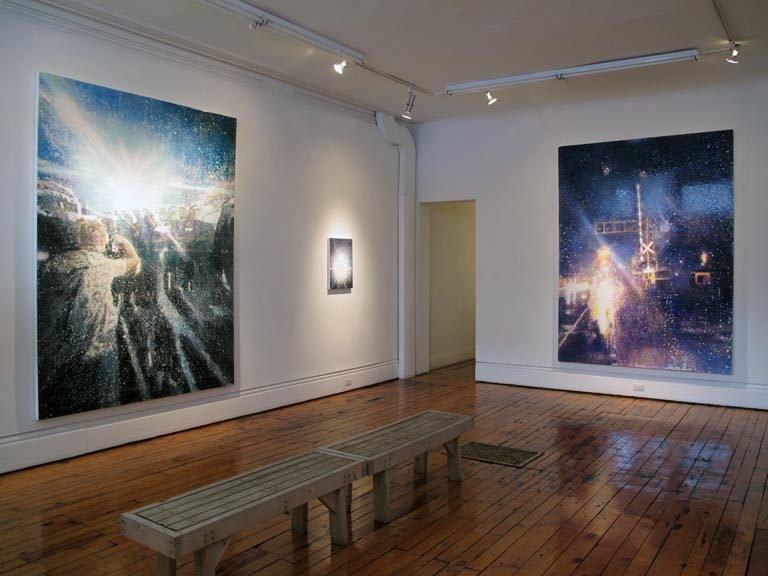X
Stephen Andrews
March 2 - March 31, 2012
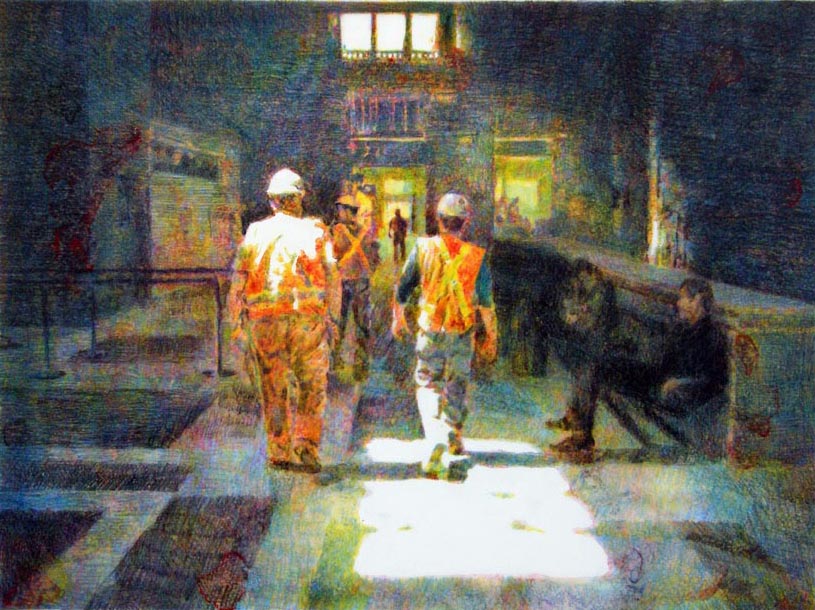
Paul Petro Contemporary Art is pleased to present X, an exhibition of new paintings and drawings on Mylar that explore the implications of crossroads and intersections, from the molecular to the celestial.
The machine can never do what the hand can, which is to fail miserably. For it is around that failure that our being is constellated.
“Change is a constant in my work. Each different body of work delineates the evolution of ideas over the course of the thirty years of my practice. The social and the self, the body and the body politic are the binaries that provide the conceptual framework for my practice. Representing subjective experience and its relationship to the larger societal context allows the smaller lived experience to shed meaning on the events taking place on the world stage and vise versa. Generally there is a news story behind a given body of work, be that AIDS, war or advances in surveillance technologies. The ideas embodied in these stories are like irritants and the work accretes around them like pearls. The various ‘looks’ of mechanical reproduction: digital, the dot matrix in print reproduction, film or television technologies are rendered by hand in an attempt to represent both the message and the means by which it is delivered. Picturing these filters articulates the distance from which we view the world. The handmade lends a certain trustworthiness that cannot be assumed with the technologically produced image.
“The studio is a controlled environment like that of a laboratory and similarly it is a place where serendipitous accidents can be repeated. Processes and materials are the vocabulary, and the method of working in series provides the syntax for my art. I cannot anticipate the direction the work might take but it is through the process of making things, be they drawings, paintings or animations that I can begin to understand what the subconscious may already have known. Intuition is my seeing-eye dog. I follow it blindly and trust that it will get me where I never knew I wanted to go.”
- Stephen Andrews 07/04/10
Stephen Andrews was born in 1956 in Sarnia, Ontario Canada. Over the last twenty five years he has exhibited his work in Canada, the U.S., Brazil, Scotland, France and Japan. Andrews' work deals with memory, identity, technology and their representations in various media including drawing, animation and recently painting.He is represented in the collections of the National Gallery of Canada, the Art Gallery of Ontario, the Belkin Art Gallery, the Donovan Collection, University of Toronto, the Schwartz Collection, Harvard as well as many other public and private collections. Corporate collections include the Royal Bank of Canada, Toronto and the Bank of Montreal, Toronto.
Here's a link to a review by Murray Whyte in the Toronto Star newspaper:
Toronto Star review March 3rd 2012
and
"Simply Called X" at TorontoStandard.com, by Sholem Krishtalka, 16 March 2012
Stephen Andrews’ new show, that takes over both floors of Paul Petro
Contemporary Art, is simply called X. As titles go, you can’t get much
more vague – or more evocative, than that. Does X signify a decennary of a
kind? It could be a halting, a stop, a limit, a crossroads; it could be a
kiss, or something more…adult; a checkmark, a proxy signature, or a lack
of an identity; a mistake, a crossing-out, a negation. Suffice it to say
that it’s simultaneously not much of a hook onto which one can hang an
interpretation, and it’s altogether too many hooks.
Andrews has always been as much of a conceptually engaged artist as a
formally engaged one. His metaphors have always been sly and oblique, but
nonetheless potent, leading the viewer down a snaking interpretive path
that has, over the years, come to include issues around queer desire,
AIDS, political and military involvement in the Middle East, surveillance
technology and culture.
Put simply, his work has always been about something, usually something
large and dangerous and subsuming. Despite the nebulousness of its title,
and the similar evasiveness of the titles of the paintings and drawings
that comprise the show, there’s definitely a ‘something’ here. If one
wants to be literal about it, x’s of various kinds are stamped across the
works, in the form of railway crossing signs, construction worker’s
jackets, lens flares.
More pervasive is the haunting sense of danger: these works are
unquestionable figurative, but details are murky. When they come into
visual focus, they usually take the form of a threat: a row of figures,
backlit by the blinding spiky halos of floodlights, casting vast obscuring
shadows, marching slowly towards you, forming a dark, impenetrable wall
between you and the background. There are other paintings here as well:
engulfing galactic skyscapes; a ghostly white blob of a figure emitting an
areola of garish pinks, greens and yellows, standing by a railway crossing
(whose upraised traffic barrier seems strangely erotic). Upstairs, the
drawings are likewise promiscuous in subject matter: the reflection of a
figure in a window; a dusky landscape; construction workers kissed by
solid blocks of light.
The narrative, as murky as it is, isn’t established so much by the content
of the drawings and paintings as their execution. It seems funny (and
perhaps a bit sticklerish) to say, but Andrews has not been a painter for
very long; after a lifetime of working more or less with drawing media, he
only began working with paint a few years ago.
One of the most revelatory and delightful aspects of this show is how
nakedly Andrews is pursuing distinctly painterly concerns: darkness and
light. One of the things that sets paint apart from other so-called
traditional media is that it’s its own light source. Drawing media, for
instance, depend on their surface for their luminosity. Paint, on the
other hand, obscures its surface; it absorbs and reflects light, and the
artworks that comprise X are all about light: the harsh bath of a
floodlight; the intense singularity of a spotlight or a flash; the glare
of sunlight; the glowing softness of a faraway satellite; these are the
foundational formal premises of Andrews’ new work, and he responds with a
debilitating subtlety, across media and within them.
Andrews hit upon his current method of working a few years ago,
tangentially inherited from his drawing practice. For the last while, he
has been building his drawings by layering flat colours atop one another.
Similarly, his paint is heavily diluted with oil medium and is smudged
onto the canvas in glazes, and colour is built up via the accretion of
transparent layers. His glazes are so thin (and so rich), that by the time
the painting is finished, the surface looks like an oil slick (which is
hardly a metaphor, here), and his tones and colours have a hypnotizing
depth and richness.
It is a laborious method, and at the scale and ambition at which Andrews
is working, its painstaking deliberateness is dizzying. In many ways,
Andrews is making old master paintings: huge towering things comprised of
careful tints and glazes; vast canvasses with no discernible brushstrokes,
huge works of sumptuous liquidity that seem to simply appear rather than
be constructed; paintings whose apparent spontaneity belie tremendous
effort. The Italian Mannerists had a word for this: sprezzatura; seeming
effortlessness, the dazzling legerdemain of a master.
Masterwork might seem an egregious hyperbole, but that’s really the only
way to describe what’s going on here, in both the paintings and the
drawings. There’s a delicacy and assurance in all the work that can only
be the result of a lifetime’s worth of effort; no one, certainly no one in
this city, is working at this level.
http://www.torontostandard.com/culture/stephen-andrews









